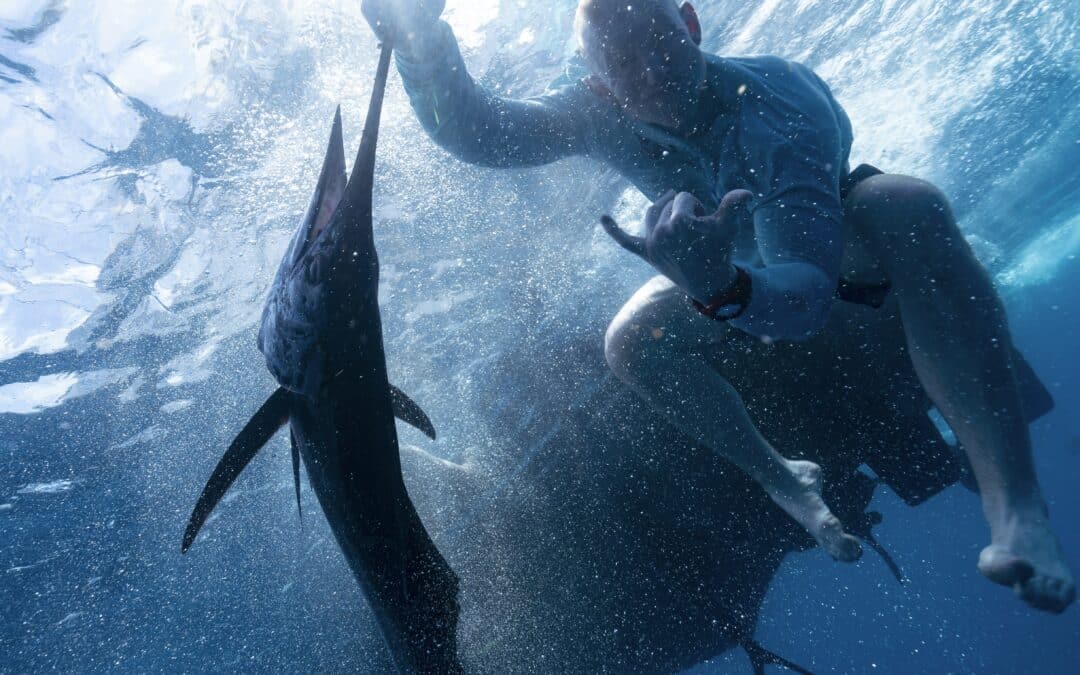Embark on a maritime quest off the shimmering coast of Flamingo, Guanacaste, where the vast blue Pacific cradles secrets beneath its waves, teeming with the elusive giants of the sea – tuna. In “Top Ways To Catch Tuna In Costa Rica: Expert Techniques and Equipment Recommendations,” you’ll navigate the art of charter boat fishing with seasoned mariners from Flamingo Marina. This guide is your beacon, illuminating the path to mastering the craft with adept techniques and tailored equipment suggestions, ensuring that your journey on the Costa Rican waters is not just a chase, but a triumphant conquest.
Understanding Tuna Fishing in Costa Rica
Tuna fishing in Costa Rica is an exhilarating adventure that beckons you to its shimmering waters. This vibrant country, known for its rich biodiversity, offers a vast aquatic playground for anglers seeking the thrill of catching the elusive Tuna. Let’s dive into the waters of Costa Rica and explore the realm of Tuna fishing.
Different species of Tuna found in Costa Rican waters
The waters of Costa Rica are teeming with a variety of Tuna species, making it a paradise for Tuna enthusiasts. Yellowfin Tuna, with their unmistakable long, bright yellow dorsal fins and finlets, are the most commonly sought-after species due to their formidable size and spirited fight. The Bigeye Tuna, often lurking in deeper waters, serves as a challenging catch that rewards with unparalleled satisfaction. You might also encounter the sleek, fast-moving Skipjack Tuna, smaller in size but not in spirit. Each species offers a unique challenge, ensuring that your fishing tales are as diverse as the waters themselves.
Seasonality of Tuna in Costa Rica
Tuna fishing in Costa Rica is a year-round affair, but certain times of the year elevate your chances of a bountiful catch. The peak season for Yellowfin Tuna, which promises larger specimens, stretches from August to October. However, the persistent angler can find these magnificent creatures at any time, with varying abundance. Understanding the migratory patterns and behaviors of Tuna throughout the year can significantly impact your fishing expedition’s success.
Best locations for Tuna fishing
Your quest for Tuna will lead you to the bountiful coasts of Costa Rica, where locations such as the Gulf of Papagayo, the Southern Pacific, and the Osa Peninsula await. Each area offers unique landscapes and Tuna populations. For those venturing out of Flamingo Marina in Flamingo, Guanacaste, your gateway to the sea is but a whisper away, positioned ideally for accessing prime Tuna fishing grounds.
Choosing a Charter Boat from Flamingo Marina
As you embark on your journey from Flamingo Marina, the selection of the right charter boat is paramount to your Tuna fishing adventure.
Picking the right Charter boat based on party size, experience, and budget
The flora and fauna of Costa Rican waters demand respect and readiness. When selecting your vessel, consider the size of your party, the level of fishing experience amongst your group, and, importantly, your budget. Options range from luxurious cruisers equipped with all imaginable comforts to more modest, rugged vessels that promise an authentic fishing experience. The size of your group and your collective experience will guide you toward the right charter, ensuring a harmonious blend of comfort, adventure, and safety.
Understanding the amenities offered by Charter boats
Charter boats from Flamingo Marina are more than mere vessels; they are bastions of comfort and convenience on the open waters. Amenities range widely, offering everything from basic necessities to upscale comforts such as air-conditioned cabins, top-tier fishing gear, and gourmet meals. Selecting a charter boat that aligns with your desires for comfort can elevate your fishing experience from memorable to unforgettable.
Importance of having a local captain with extensive knowledge
The captain is your guide, mentor, and guardian on the treacherous and rewarding seas. A local captain, armed with extensive knowledge of the waters, seasons, and behaviors of Tuna, is invaluable. They navigate not just the physical landscape but also understand the intricate dance of hunting Tuna, turning your voyage into an insightful journey through the rich, cerulean realm of Costa Rica.
Essential Tuna Fishing Techniques
To coax the elusive Tuna from the depths of Costa Rica’s oceans, one must master several fishing techniques.
Using trolls for catching Tuna
Trolling, a method where lines with baited hooks are drawn through the water, mimics the movement of Tuna prey. This technique is particularly effective in enticing the larger species. The art of trolling requires patience, precision in speed, and an understanding of the water’s surface.
Live baiting techniques for Tuna fishing
The thrill of live baiting lies in its ability to simulate the natural environment of Tuna, leveraging their predatory instincts. By carefully selecting and presenting live bait, you engage directly with the primal nature of Tuna, enticing them into a dance of predator and prey.
Practicing casting and drifting methods
Refining your casting and drifting techniques can significantly enhance your Tuna fishing experience. These methods, requiring both skill and subtlety, allow you to present your bait in the most natural and unassuming manner possible, appealing to the Tuna’s instincts and curiosity.

Expert Recommendations on Tuna Fishing
Immerse yourself in the wisdom of experienced anglers to elevate your Tuna fishing endeavor to the heights of success.
Choosing the optimum time for fishing
The early morning or late afternoon, when the sun dances on the horizon, casting a golden glow upon the waters, are magical times for Tuna fishing. Tuna are more active during these hours, making them prime times for casting your line.
Correct speed and course for trolling
Trolling is an art that requires the perfect harmony of speed and course. A speed too swift might deter the Tuna, while too slow could render your bait uninteresting. Maintaining an optimal speed that mimics the natural movements of Tuna prey is crucial.
Utilizing birds to locate schools of Tuna
Nature provides signs, if one knows where to look. Birds diving into the water can often indicate the presence of Tuna schools below, feasting on smaller fish. Observing these natural indicators can lead you to abundant fishing grounds.
Recommended Equipment for Tuna Fishing
The right equipment can make the difference between a successful catch and a tale of the one that got away.
Choosing the right fishing rod and reel combination
A sturdy, yet flexible rod paired with a high-quality reel capable of withstanding the forceful tug of Tuna is essential. The balance between strength and sensitivity in your equipment will ensure that you’re ready for the challenge of reeling in these formidable opponents.
Selection of fishing lines and leaders
The choice of fishing lines and leaders is critical, with options varying in visibility, strength, and resistance to abrasion. Opting for a line that can endure the Tuna’s powerful runs and sudden changes of direction without sacrificing discretion is key.
Required hooks and baits for tuna fishing
Selecting the right hook and bait combination is akin to choosing the right key for a lock. The size, shape, and material of the hook should match the species of Tuna you’re after, while the bait – whether artificial or live – should be irresistible to your target.
Important Safety Precautions for Tuna Fishing
The sea is a realm of beauty and danger, requiring respect and preparedness.
Importance of a personal flotation device
The ocean’s unpredictability demands the use of a personal flotation device at all times. This simple, yet life-saving piece of equipment should be non-negotiable in your fishing preparations.
Using gloves to handle fish and equipment
Tuna, with their strength and size, can pose a risk not just during the catch but also aboard the boat. The use of gloves provides protection against the fish’s sharp fins and the wear on your hands from the equipment.
Protecting skin from sun, salt and fish
The elements – the sun, saltwater, and fish slime – can take their toll on your skin. Protective clothing, sunscreen, and hydration are your allies in combating these environmental challenges, ensuring that you can focus on the thrill of the chase.
The Role of Weather and Sea Conditions
The dance of Tuna and angler is choreographed by the weather and sea conditions, each playing a crucial role in the day’s success.
Effect of weather on Tuna behavior
Weather patterns can influence Tuna behavior significantly, affecting their feeding habits and movements. Understanding these patterns allows you to adapt your strategy, positioning yourself for success.
Adapting to changing sea conditions
The sea is ever-changing, with conditions that can turn from calm to treacherous in moments. Adaptive techniques and strategies ensure that you can continue your pursuit safely and effectively, regardless of the sea’s mood.
Importance of checking weather forecasts
A check of the weather forecast is as essential as any gear in your tackle box. Prior information on weather patterns and sea conditions can guide your planning, ensuring that your adventure on the waters is both fruitful and safe.
Catch and Release fishing Ethics
Respect for the ocean and its inhabitants is paramount, guiding us toward practices that ensure their preservation for generations to come.
Understanding catch and release
Catch and release is a practice born of respect, ensuring that after the thrill of the catch, Tuna are returned to their environment with minimal harm, ready to thrive and reproduce.
Proper ways of handling and releasing Tuna
Handling Tuna with care during release involves supporting their body in water, removing hooks gently, and ensuring they are vigorous enough to swim away. This practice speaks of an angler’s reverence for life and sustainability.
Advantages and benefits of catch and release
Catch and release contribute to the preservation of Tuna populations and their ecosystems, ensuring that the joy of fishing continues as a legacy. It is a testament to the balance between the thrill of the catch and the responsibility towards conservation.
Preparing and Cooking Your Tuna
The culmination of your Tuna fishing adventure is perhaps the moment you prepare and savor your catch, a ritual that connects you to the sea and its bounty.
Basic steps to clean and store your catch
Cleaning and storing your Tuna promptly and efficiently is crucial to preserving the quality of the meat. Techniques such as bleeding, icing, and proper filleting not only honor your catch but also enhance the culinary experience.
Simple recipes to enjoy the fresh Tuna
Fresh Tuna offers a canvas for culinary creativity, whether sashimi, grilled steak, or ceviche. Simple recipes that highlight the Tuna’s natural flavors are a testament to your journey from sea to table.
Importance of knowing local laws on fishing limits
Understanding and adhering to local fishing laws and limits is not just a legal obligation but a moral one, ensuring that the waters of Costa Rica remain vibrant and teeming with life for everyone to enjoy.
Common Mistakes To Avoid While Tuna Fishing
Awareness of potential pitfalls sets the stage for a successful fishing adventure, ensuring that your story is one of triumph rather than trial.
Avoiding overfishing when locating a school of Tuna
The discovery of a school of Tuna is exhilarating but requires restraint. Overfishing not only diminishes the population but affects the ecological balance, urging a responsible approach to fishing.
Wrong techniques that can cause the fish to unhook
The right technique is your ally in the battle with Tuna. Common mistakes such as improper hook setting or inadequate line tension can lead to the heartbreak of the fish unhooking, a reminder of the finesse required in this sport.
Mistakes that can lead to equipment failure
Equipment failure often stems from neglect or misuse, such as failing to maintain your gear or using inappropriate equipment for the size and strength of Tuna. Attention to your equipment’s care and suitability can make the difference between success and disappointment.
Embarking on a Tuna fishing journey in Costa Rica is not just about the catch; it’s a voyage into the heart of nature, a dance with the ocean’s creatures, and a journey that tests and rewards with unparalleled experiences. With the right knowledge, respect for the environment, and mindfulness of one’s actions, this adventure promises not just tales of the catch but memories that resonate with the rhythm of the sea and the spirit of conservation.









0 Comments